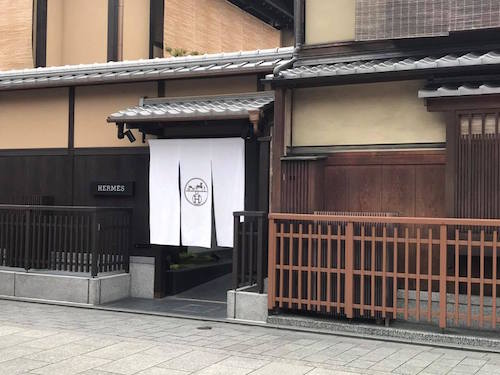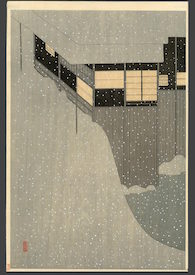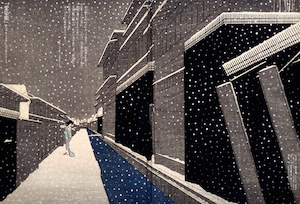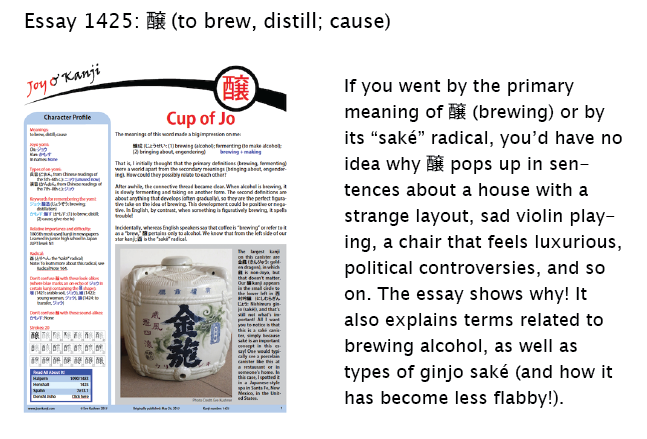Tying Everything Together
I recently received a mysterious envelope containing a glossy magazine-sized publication. I have no idea who sent it from Manhattan or why. Although I don't usually scrutinize unsolicited mail or ponder its origins, something about this particular object intrigued me. And perhaps that's appropriate. The theme of the issue is "objects," which is to say "beautiful objects."
The publication, Le Monde d'Hermès (#70, the spring and summer edition), is a catalogue for the upscale boutique Hermès. That's not at all the sort of place I would shop, but the catalogue isn't really for shoppers anyway. Instead, it's full of essays and random arty photos. One table of contents takes you through only 74 pages. When you flip the thing over, you find another table of contents covering the other 74 pages.
Wondering whether anyone else received this catalogue (and if so, how we were selected), I posted about it on Facebook. A Japanese friend in Tokyo promptly responded with this:
持っています。
I have it.
持つ (もつ: to have)
東京で「エルメスの手しごと展」があった時にご自由にお持ち帰りください 、と置いてありました。
When there was a "Hermès Handmade Exhibition” in Tokyo, they said, "Please feel free to take (these publications)."
東京 (とうきょう: Tokyo); 手しごと (手仕事: handmade item); -展 (-てん: exhibition); 時 (とき: when); 自由に (じゆうに: freely); 持ち帰る (もちかえる: to carry home); ください (please); 置く (おく: to put)
すべてのページが美しいです。
Every page is beautiful.
すべて (全て: all); 美しい (うつくしい: beautiful)
Well, I certainly didn't expect that coincidence!

Photo Credit: Glennis Dolce
Here's a second coincidence. Just this week, a friend posted this photo on Facebook. It's of the Hermès store in the Gion section of Kyoto. And I may as well present a third coincidence. Today, a different Facebook friend posted an article from 2016 that mentions Hermès in conjunction with Japan!
The catalogue has another Japan connection—a big one. There's a Q&A titled "In Japan It's the Object's Origin That Makes It Valuable" that goes for six pages, including three stunning prints by Settai Komura (1887–1940). I was unfamiliar with his work, but check these out:


These two images aren't actually part of the Hermès catalogue, but I'm sharing them just to show you what Komura could do. The left-hand work (1924) is 「雪の朝 (ゆきのあさ: Snowy Morning)」. The right-hand piece is unnamed and served as the endpaper of the book 「愛染集 (あいぜんしゅう)」. The word 愛染 means "being captivated by lust," and -集 means "collection." More great examples of his work appear on Pinterest.
Olivier Wicker, editorial director at Hermès, conducted the catalogue interview with Seigo Matsuoka (松岡正剛, まつおか せいごう: 1944–), an editor, writer, and researcher who founded the avant-garde magazine 「遊 (ゆう: Play)」 in the early 1970s. According to the catalogue, his journal is "dedicated to objects, to their similarities, their differences and their meanings"—hence the relevance to an object-oriented theme issue.
Though the interview is in English, kanji pops up throughout with little rhyme or reason, as in this comment by Matsuoka:
Some objects become valuable when they are chosen and cherished by people with a good critical sense (mono-wakari, ものわかり), or experts (mekiki, 目利き) on their period. Japan also has a long tradition of objects that represent excellence (meibutsu, 名物). These are not renowned products, but products that are "signed" (mei, 銘(名)) by their creator, which gives them an origin, a history.
This reads more like a language lesson than anything! And it's a good one, as I didn't know the first two words introduced. Here is (more or less) how Breen presents the first one:
物分り or 物分かり or 物わかり or 物解り (ものわかり: understanding (of people's circumstances and feelings); perceptiveness; sympathy; wisdom)
things + understanding
That's a far cry from "good critical sense." Perhaps "perceptiveness" is the most relevant definition when it comes to assessing valuable objects.
Breen defines the second term not as "experts" but as follows:
目利き (めきき: judgment; connoisseur) eye + efficacy
This word is about having a sharp eye.
Speaking of sharpness, 分 and 解 in the first term and 利 in the second keyword all contain swords or knives! I'm talking about the "sword" radical 刀 and its variant 刂.
As for the 銘 bit, that's exciting to me because I recently published essay 1847 on 銘 (inscription; established name; to engrave on one's mind). I like the point Matsuoka makes here about how a signature confers an origin and a history on an object.
Wicker poses the following questions, among others:
• How would you define the very distinctive way the Japanese relate to objects?
• Can you elaborate on that Japanese custom of frequent present-giving, which also indicates a particular relation to objects?
• What strikes Westerners in Japanese stores is the extreme care that sales personnel take over wrapping an object. Where does this meticulousness come from? What does it say about your relation to objects?
• Do you think that the Japanese culture of objects has declined as a result of industrialization?
• New technologies are engendering a virtual reality. Is this revolution disrupting the relation to the object in everyday life?
This is abstract stuff, but Matsuoka doesn't shy away from the topic, which after all is his niche.
Here is the answer I like best, a response to the third question above:
This practice of wrapping (tsutsumu, 包む) goes hand in hand with the Japanese attitude of "not exposing", of not openly expressing one's thoughts. But it comes from another tradition, which is even more fundamental, that of knotting (musubu, 結ぶ). We see this in the sacred ropes (shimenawa) of Shinto shrines, in kimono belts (obi), or in that wide white rope worn by a sumo champion to enter the ring (yokozuna). The ceremony that "ties" two families before a wedding (yuinô) is based on the same concept.
Strangely, the catalogue included no kanji in that paragraph! Here are the words in need of elaboration:
しめ縄 or 注連縄 (しめなわ: Shinto ropes used to cordon off consecrated areas or as a talisman against evil)
帯 (おび: kimono sash)
横綱 (よこづな: sumo grand champion), not a sumo ring, as the text implies!
結納 (ゆいのう: ceremonial exchange of engagement gifts)
Note that the last term includes 結, as in 結ぶ (むすぶ: to tie, bind, link). Everything ties together!
These comments of Matsuoka's make me happy because I loved the movie 「君の名は (きみのなは: Your Name)」, and one of my biggest takeaways was the prevalence of threads, ribbons, ropes, and the like—all devices for tying things together. Much of the action takes place in a town called Itomori. The place name 糸守 literally means "to protect the thread." The protagonist's grandmother made braided straps (組紐, くみひも) that people could use in various ways. A girl's hair ribbon plays an important role in connecting two people. A comet streaming through the air looks distinctly like a ribbon. And there are glimpses of ropes tied around trees to mark off a sacred area. Those ropes are also called shimenawa.
I'll close with one more kanji-related comment from Matsuoka. I don't quite buy it, but I like the kanji-centricity:
For me the most effective gesture for countering this digital culture (which is so useful to us in many respects) is to write, to write with a pen and paper. In ceasing to write by hand not only are we starting to forget the characters, but our sensitivity to objects is also being eroded. If we stop writing, I think we'll end up not understanding anything.
If you do indeed find yourself forgetting characters, you can start by studying essay 1425 on 醸 (to brew, distill; cause). Here's a sneak preview:
Have a great weekend!
*****
Did you like this post? Express your love by supporting Joy o' Kanji on Patreon:



Comments